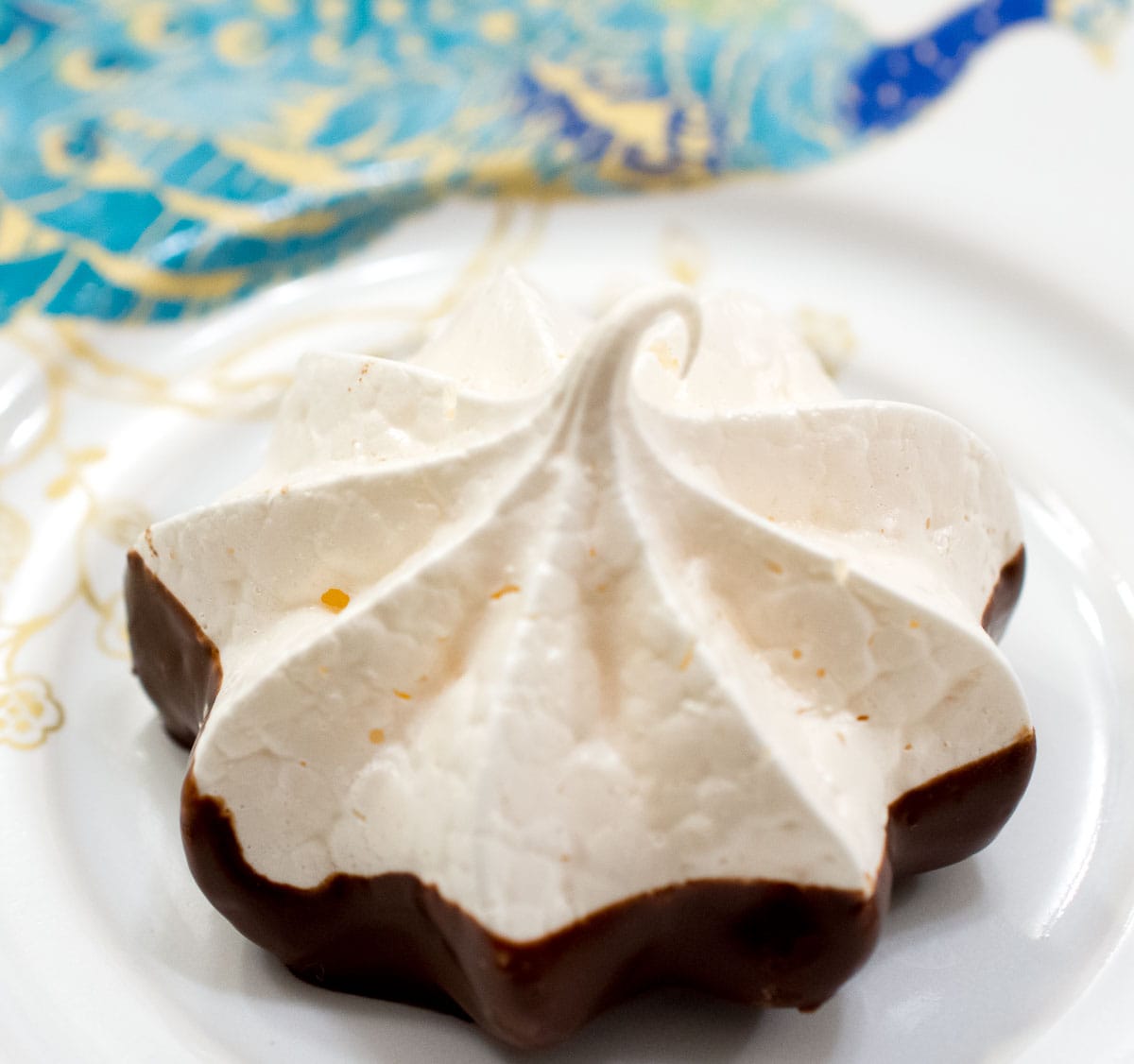
Flavorings are used to enhance, add to or change the taste of the base product, be it cake, cookies, sauces, yeast doughs, pastries, candies, etc.
Flavorings can come from extracts, emulsions, oils, compounds, powders, spices and herbs. Where to use what is another question. Each of these can be double or triple strength. For professional baking purposes, we always checked to make sure they were bake-proof meaning the flavor would not disappear when heated.
Wikipedia offers this difference between flavorants and flavors, "A "flavorant" is defined as a substance that gives another substance flavor, altering the characteristics of the solute, causing it to become sweet, sour, tangy, etc. A flavor is a quality of something that affects the sense of taste."
The sense of smell determines the ability to taste. Someone with a keen sense of smell can taste subtleties that a person without such a developed sense cannot which is why some people may think something is very cinnamon flavored and another person finds it lacking.
From Harvard University comes this definition of natural vs. artificial flavors. "The FDA broadly defines natural flavors to include any flavor isolated from natural sources like plant material (fruits, roots, bark, herbs, etc.) or animal products (meat, dairy, etc.) [3]. Artificial flavors are any flavors that are not defined as natural, even if they have the exact same chemical composition as flavors isolated directly from nature [1].
This distinction between the origins of flavors has no bearing on how safe, healthy, or delicious they are. In fact, flavor agents produced in a controlled laboratory setting undergo rigorous quality control at every stage and do not require a lengthy, labor- and resource-intensive extraction process or acquisition of naturally rare or difficult-to-cultivate materials. As such, many nature-identical artificial flavors are actually available in higher purity than their natural congeners and may be obtained with less damage to the environment."
Extracts are the most familiar flavorings in home kitchens. Vanilla and almond are two of the most commonly used either as the main flavor or a supportive flavor. Extracts are most used in cakes, cookies, yeast products, pastries, fillings, and buttercreams. Extracts contain alcohol as a base. They can be pure, which use essential oils or distillates from raw materials mixed with alcohol. They can also be made synthetically to imitate the flavors of the pure using artificial flavors or a mixture of natural and artificial.
Pure Vanilla vs. Imitation Vanilla
Pure extracts have become very expensive. A gallon of Tahitian vanilla recently went to $400.00 and Bourbon Vanilla costs $350.00 a gallon. Cook's magazine did a blind taste test several years ago to determine whether pure vanilla was all it was cracked up to be. After tasting many pure and artificial vanillas the winner was McCormick artificial vanilla. Price is not always the determining factor, although one is often led to believe this.
I generally reserve pure vanilla for buttercreams, pastry cream, crème brulee or anywhere it will be the predominant flavor. I never use it anywhere there are complex flavors such as chocolate, lots of spices, molasses, or a lot of ingredients . It is simply a waste of money as it will get lost.
When I taught, one of my classes was vocal in their hatred of Italian buttercream. I couldn't believe it until I saw the recipe. It used no flavoring. Even I didn't like that! So I made a batch and took it to class. It used artificial vanilla and pure almond flavoring. Their eyes lit up when they tasted it. To a one, they changed their minds. One of the students said, "but you used the expensive vanilla." They were even more impressed when I told them nope, I used the same cheap stuff they use here.
The one place you cannot use extracts is to flavor chocolate when using it as a coating. The alcohol or water in the extract can cause the chocolate to seize or clump up almost irreversibly. Flavor the ganache that is being used as the center instead.
Oils
Although they are referred to as oils, they do not contain any vegetable oil. Theses flavorings are obtained from the peels (think orange or lemon), flowers or plant leaves. Because they contain no alcohol or water and are high heat tolerant, they are perfect for candy and flavoring chocolate.
They may be used in baking, but a little goes a long way as they are stronger than extracts. Generally, if a recipe calls for 1 teaspoon of flavoring, you would use a few drops to ¼ teaspoon. While extracts can be added at the beginning with the whites and sugar, oils should be added at the end of the beating cycle.
Oils are generally more expensive than extracts but they are also much more intense and less is used. It is important to get oils that are specified as food grade. There are other essential oils that are used in aromatherapy, soaps, etc. that are not meant to be used for food.
I prefer anise oil for my anise recipes because of its intensity. I think it imparts much more flavor than extract. However, I generally specify extracts as they are easier to get for most people.
Recently it was brought to my attention that oils could not be used when making meringues. This person was going to use peppermint oil to flavor their meringue cookies but at the last minute worried about the meringue not whipping to stiff peaks since fat can cause that problem. She called LorAnn Oils and the person told her not to use oil as it would cause the meringue not to whip up as it should.
When I went on their website I found a recipe for Peppermint Meringues. They indeed did use peppermint oil. The trick is where you put it. It does not go in with the whites in the beginning as does an extract. The whites and sugar are mixed to stiff peaks and then a few drops of oil are mixed in. The photo for this blog was made with anise oil as it was the only one in the house. The oil did not cause a problem as long as it is added at the end of the beating.
Bakery Emulsions
Typically flavor emulsions contain water, essential oils, emulsifiers and stabilizers such as gum arabic.
These are water-based and are used in place of extracts on a one to one substitution. They are bake-proof which means the flavor will stay the same when baked. Sometimes with extracts, the flavor isn't as strong when baked. These are used primarily in large bakeries where cost is a factor. These are less expensive than extracts.
Powder
There are powders that are used in baking as primary or secondary flavorings agents. Cocoa is one such powder. Another example is freeze-dried fruit. I use it in buttercreams where I want a strong strawberry or raspberry flavor. However, you have to be careful with the freeze-dried powder. It really soaks up the liquid and can be problematic if used as a main ingredient in cakes and cookies. I thought it would be great to use in an Angel food cake. Not so much. It could have been the amount I used but it was not anyone's idea of an Angel Food Cake! In fact, it wasn't much of any cake truth to be told.
More common flavorings are spices such as cinnamon, nutmeg, ginger, cloves – a whole host that are powdered and used for flavoring. When using powders or spices, they should be mixed with the dry ingredients in the recipe so they disperse evenly when added to the batter.
Liquors and Liqueurs
I love using these as flavoring agents. Dark rum is my favorite and I use it in many ways. Often I soak the fruit in it for yeast products or fruit purees. I also enjoy using bourbon.
Liqueurs are usually sweetened and flavored with fruit, spices, nuts, herbs or seeds. I generally don't use these for a baked item but do use them in soaking syrups, or syrups brushed on after baking as well as ganaches. I have one ganache I use at the restaurant that is enhanced with brandy.
Citrus Peels and Juices
Who hasn't used orange, lemon or lime peel that has been zested to add intense flavor to a cake or baked goods? If I am going to use the peel in a crème anglaise, I find it more agreeable to peel the fruit with a vegetable peeler, cut it into ½ to 1-inch pieces and add it to the milk or cream being used. I bring it to a boil and allow it to cool in the liquid.
Sometimes in the case of Baklava, I leave the peel in the syrup overnight for maximum effect. The same can be done with milk or cream. The longer you leave the peel in the liquid the more intense the flavor will become because you are essentially taking the oil from the peel to flavor the liquid. When I want to use the liquid, I simply remove the peel. I then have all of the flavor in a perfectly smooth mixture.
If I am baking, I usually don't use citrus juices as a flavorings agent unless I back them up with the zest as in my Orange Chiffon. I find the juice alone is too week when combined with flour, eggs, etc. to have much effect. But the zest or rind is something else. They add a lot of flavor.
Essences
Essences are distilled with steam from fruits, spice, and other plants. They are very aromatic and usually, just a few drops are needed.
Seeds
are often used either inside bread and cookies as well as sprinkled on top for additional flavor. If I want the flavor of a seed such as sesame or caraway but not the seed itself, I will grind them in a little electric spice grinder to make a powder that can be dispersed throughout the recipe.
Additional sources of flavorings
Vanilla sugar can be made by submerging vanilla beans in a canister with sugar for a while. Even vanilla beans that have been removed from a mixture can be washed, dried and used. While I don't use it in baking as a vanilla extract imparts much more flavor it is useful used in finishing such as the Honey Diamonds.
I have seen where people make vanilla extract by loading up vodka with vanilla beans. The problem with this is there is no way of knowing how weak or strong the vanilla will be. In the beginning probably not very, but if they sit in the vodka for a long time, probably quite a lot.
Coffee flavoring is as easy as putting instant coffee or instant espresso in little water or other liquid to make a very thick liquid that is then used. In my recipes, I specify the amount of coffee to the amount of liquid.
Sources for Flavorings
It should be noted that small amounts of spices, oils, and emulsions should be bought at a time to ensure they are fresh and have maximum flavor. When I closed my bakery, I brought some of the open bottles of spices home with me. However, after a while, they lost their potency and I had to discard them. So wherever you buy your flavorings do not get the biggest bottle even though it may be cheaper to do so unless you bake a lot and will use them within six to nine months.
Grocery stores – This is probably where most people get their flavorings. However, they are often limited and I haven't seen any that carry oil – at least where I live.
Penzy's – I often buy here because of the high quality of their flavorings. They have many sizes as well as ground spices in cellophane bags for those that use a lot. They also have mail order. They have some oils but mostly dry products as I recall.
LorAnn Oils and Flavors – This is where I go when I want oils or emulsions. Their diversity is staggering and if you can't find it here, I'm not sure you will find it. The quality is high and they will mail order.
King Arthur Flour – They also have a lot of flavorings and they get their oils from LorAnn so I just go to the source and buy from LorAnn. However, King Arthur does have everything a baker needs – or at least it seems that way.
There are other sources for flavorings for sure but these have very high quality and good service.
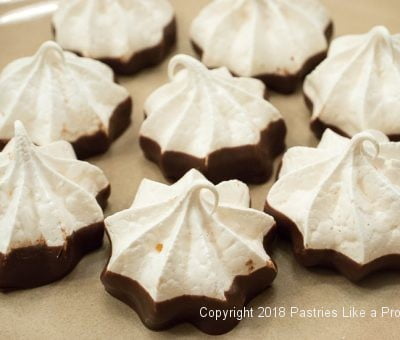


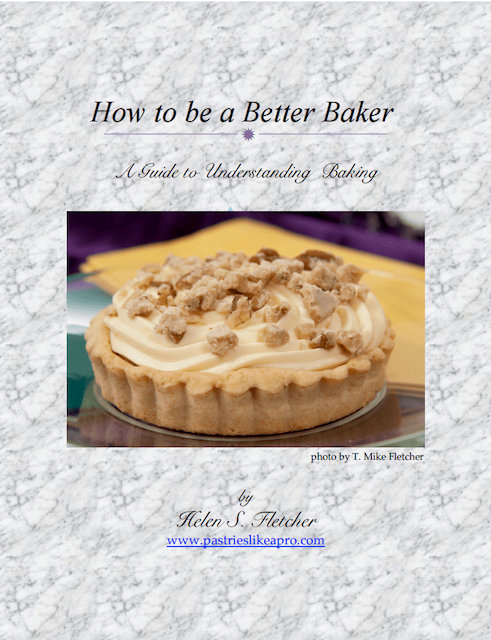

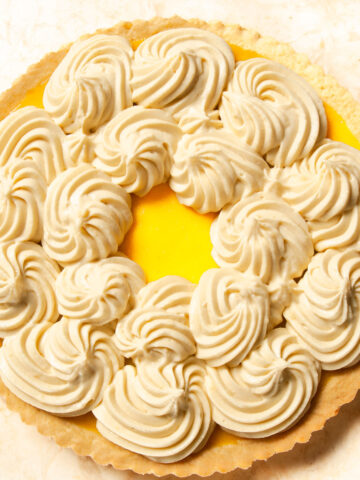
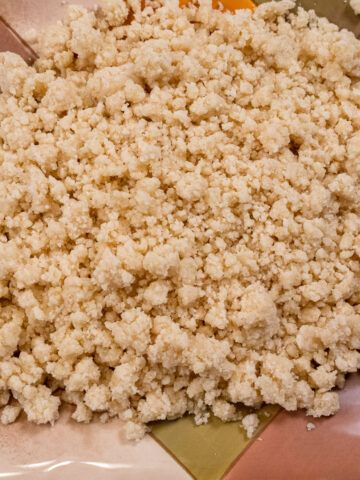
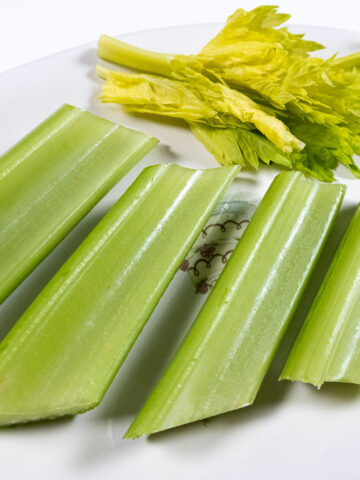
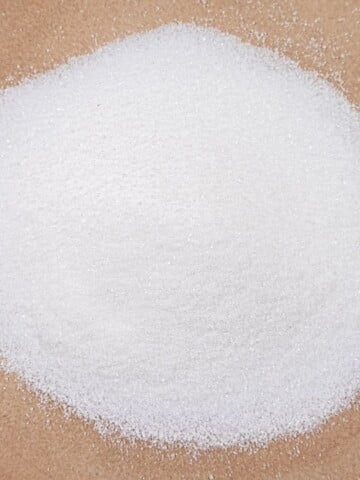
Mark McPherson says
Does the issue of vanilla extract (whether real or imitation) also seize up caramel mixtures? I am looking to make caramel corn which says to add the vanilla extract when the syrup reaches 265 degrees F. While extract has barely any water in it, I notice that imitation vanilla is mostly water. What is your experience with caramel making and where/when to add vanilla extract (or imitation)?
Helen S Fletcher says
Hi Mark, the water isn't a problem. I put it in with the cream at the end no matter to what temperature I take it. Either vanilla works fine. If you go to my caramel post you will find the caramel we made at the bakery in large, large pots. This recipe is just a smaller version of that caramel.
Silvyn says
Great thanks, Ms Fletcher
Helen S Fletcher says
You're welcome Silvyn.
Sharon Thomas says
Love your post on flavorings. You opened my thinking processes though I have been lovingly baking for my family for years!! Months ago, I was on King Arthur's website and saw "butter" flavoring and am intrigued. I have never deviated from using butter or European (creamier) butter in my baking, and wonder when this product would be desired? How might I use this? Thank you for all you and your husband do with so much love and passion! Thank you for who you are!! Love, Sharon Thomas
hfletcher says
Hi Sharon - using imitation flavorings other than vanilla can be problematic. I bought the butter flavoring but it didn't taste like butter to me and certainly didn't replace the flavor of butter. Think butter flavored crisco. It definitely can't replace butter. Not sure they make it anymore. I also don't use rum flavoring. Some flavors just aren't replaceable. I love KA"s website and blog but keep in mind they also sell the items. If you are trying out flavors, always buy the smallest amount you can until you make sure it is a flavor you enjoy.
Diane says
Dear Mrs. Fletcher- Thank you so much for this post. I have also been struggling with the price of vanilla. After reading you post, I went out and bought a 32 oz bottle of McCormick Imitation Vanilla for $5 at Sam's Club!
Thanks!
hfletcher says
Hi Diane - Baking should be enjoyable but if we have to think long and hard about an expensive ingredient then I usually find another one. I use this brand personally and another at work that comes from a professional supplier (probably the same thing!). Like I said there are places for the real thing but for most things, this does the job.
Wayne says
Getting the freeze dried fruit to perform as intended is really challenging, but I think it's worth it for the bright fruit flavors that wouldn't otherwise be possible. If only it weren't so expensive.
hfletcher says
Hi Wayne - Like many other food items, I don't think they are made to go in everything. They work well in buttercreams if powdered first. As to cost, Trader Joe's has the best pricing I've found without going on the internet. Some of the camping stores have outrageous prices.
Marilyn says
Thank you so much for the information, explained so well. I always look forward to reading your posts and always learn so much! I am definitely going to leave the citrus peel in the liquid for longer.
hfletcher says
Hi Marilyn - thanks for the kind words. You will be surprised at the difference it makes to leave the peel in for a bit.
Karen Bissinger says
Helen, thanks for the very informative information. I was very surprised to read the information on Pure Vanilla Extract vs. Imitation Vanilla. I was always "taught" to only use Pure Vanilla in baked goods and I just ran out of my favorite Pure Madagascar Vanilla Extract! I'm so glad you "debunked" this!!! This year, there has been a dramatic price increase in pure Vanilla and I was dreading spending $30 for a 4 oz. bottle!
I just sent my husband to the Grocery store to buy me the Imitation Vanilla!!
hfletcher says
Hi Karen - The price has increased so much because there have been terrible problems with the vanilla crops. The flowers that provide the vanilla beans must be hand pollinated. However, much of the crop has been destroyed in the last few years.
My favorite part of your comment is sending your husband out to the store. My husband does a lot of my shopping also and it's
such a help.
I think the pure vanilla attributions in recipes came about when it was necessary to go to extremes to be considered "gourmet". I'm glad to see some of those chains being broken which is why I spoke out in this blog. If you noticed,none of my blogs specify "pure vanilla". But as I said, I do use it where it matters.
Lorelei says
What a great article on flavorings. You wrote about many things I did not know. Thank you for taking the time to write the blog!
hfletcher says
Your welcome Lorelei. It was suggested by a reader and I was happy to do it.
Carolyn says
Helen - I really appreciate your opinion on using artificial vanilla in cakes and cookies. With the current cost of pure vanilla I’ve been struggling with using the real stuff in these baked goods. I’ll keep the real stuff for where it really does make a difference.
hfletcher says
Hi Carolyn - I have never had anyone turn down my baking and pastry because of what I have used in it. I think a lot of people have been struggling with the price of vanilla and am happy to see that the post has helped.
Ness Blackbird says
Thanks as always for the great information!
One note: The Cake Bible recommends using liqueurs in ganache, and I've never had trouble with it. I think the recipe says a couple of tablespoons to a pound of chocolate, added after the mixture is emulsified.
hfletcher says
Hi Ness - I agree that using liquors and liqueurs in ganache is a great idea. I do it all the time and updated the blog to reflect that. I also mentioned that at the restaurant I use a ganache enhanced with brandy and coffee. Thanks for the reminder.
mybobba1 says
Another WOW, amazing article the absolute best most comprehensive article I’ve ever read on enhancing flavorings I’ve ever seen. It sure taught me a thing or two or three, needless to say I am saving and printing to keep on hand. I Loved it and think you are just thr Best.Big hug marilyn
hfletcher says
Hugs back Marilyn - thanks for the glowing review. Hope all is well with you.
Marisa Franca says
Thank you for such an informative post. Some I knew, some I didn't. But your explanation of the finer points makes me more confident in what I need to use for the best flavoring.
hfletcher says
Hi Marisa - this post was actually requested by a reader so if you or anyone want a particular post, let me know and I'll work it into the schedule.
Charlene says
Wow! I didn't know any of this. Thanks for the education!
hfletcher says
Hi Charlene - You're very welcome. Hope all is well with you, Tom and the rest of the family. Tell everyone hi for me.
mybobba1 says
Baizer?